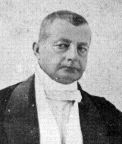This is an old revision of this page, as edited by AnomieBOT (talk | contribs) at 18:40, 25 December 2024 (Substing templates: {{Cita libro}} and {{Cita web}}. See User:AnomieBOT/docs/TemplateSubster for info.). The present address (URL) is a permanent link to this revision, which may differ significantly from the current revision.
Revision as of 18:40, 25 December 2024 by AnomieBOT (talk | contribs) (Substing templates: {{Cita libro}} and {{Cita web}}. See User:AnomieBOT/docs/TemplateSubster for info.)(diff) ← Previous revision | Latest revision (diff) | Newer revision → (diff) Ethnic group| Hrvati u Urugvaju (Croatian) Croata-uruguayos (Spanish) | |
|---|---|
 Croatian monument in Punta del Este Croatian monument in Punta del Este | |
| Total population | |
| 3,300–5,000 | |
| Regions with significant populations | |
| Montevideo · Colonia | |
| Languages | |
| Rioplatense Spanish · Croatian | |
| Religion | |
| Christianity (predominantly Catholicism) | |
| Related ethnic groups | |
Croatian Uruguayans comprises of Croat migrants to Uruguay and their descendants. The first Croats reached the Río de la Plata region during the second half of the 18th century; the biggest inflow of immigrants was mostly during the first half of the 20th century. They established their own institutions, such as the Croatian Home. According to estimates from the United Nations, there are some 3,300 people of Croat descent living in Uruguay, whereas other estimates place the figure at around 5,000. In 2006, author and politician Eduardo R. Antonich published the monograph Hrvatska i Hrvati u Urugvaju (English: Croatia and Croats in Uruguay), which explores the history of the Croatian community within Uruguay.
History
The earliest records of Croatian settlers in Uruguay date back to the 18th century, referring to sailors who abandoned Venetian and Spanish ships and settled in the Río de la Plata region. The oldest known testimony on this matter is the will of Šimun Matulić from 1790, in which he states that he was born on the island of Brač, during the Republic of Venice, and bequeaths his property in Montevideo to several individuals with Croatian surnames to care for his holdings.
At the end of the 19th century, within the framework of Uruguay's open immigration policy, there was a more significant influx of Croatians to Uruguay, primarily from the Dalmatia region. Most settled in Montevideo, although small communities were established in places like Conchillas and Carmelo in the Colonia Department, where they engaged in maritime transportation.
In 1928, the Hogar Croata de Montevideo (English: Croatian Home of Montevideo) was founded, an association aimed at promoting Croatian culture, language, and traditions, as well as bringing together immigrants and their descendants. However, for much of the 20th century, the Sociedad Yugoslava Bratstvo del Uruguay (English: Yugoslav Brotherhood Society of Uruguay) was composed mainly of ethnic Croats, along with Montenegrins, Serbs, Bosnians, and Slovenes, but ceased operations in the 1990s due to the Yugoslav Wars.
Politically, much of the Croatian community in Uruguay opposed the Independent State of Croatia since the treaties of Rome ceded the Dalmatia region—where most Croatian immigrants in Uruguay originated—to Fascist Italy. Additionally, following the Tito–Stalin split in the years after World War II, members of the Hogar Croata de Montevideo sided with Josip Broz Tito, the Leader of Yugoslavia from 1945 to 1980, while those of the Sociedad Yugoslava Bratstvo del Uruguay supported Joseph Stalin.
Notable people
-
 Antonio Lussich
Antonio Lussich
-
 Margarita Percovich
Margarita Percovich
-
 Julio César Ribas
Julio César Ribas
-
 Raúl Fernando Sendic
Raúl Fernando Sendic
-
 Teodoro Vilardebó Matulić
Teodoro Vilardebó Matulić
- Past
- Nancy Guguich (1944–2021), vocalist
- Antonio Lussich (1848–1928), sailor, writer and naturalist
- Arturo Lussich (1872–1966), physician and politician
- Raúl Sendic (1926–1989), politician and guerrilla leader
- Teodoro Vilardebó Matulić (1803–1856), physician
- Present
- Jorge Jukich (born 1943), Olympic cyclist
- Rodrigo Lussich (born 1972), television personality
- Esteban Ostojich (born 1982), football referee
- Margarita Percovich (born 1941), politician and activist
- Mariana Percovich (born 1963), politician and activist
- Julio César Ribas Vlacovich (born 1957), footballer manager
- Raúl Fernando Sendic (born 1962), politician, Vice President of Uruguay between 2015–2017
See also
References
- Croats in Uruguay (in Spanish)
- "Croatian Home". Archived from the original on 2020-06-04. Retrieved 2013-10-25.
- Croats in South America Archived 2015-07-22 at the Wayback Machine (in Croatian)
- Croatia and Croats in Uruguay Archived 2015-07-21 at the Wayback Machine (in Croatian)
- "Croatian Diaspora in Uruguay". template.gov.hr. Archived from the original on 10 December 2023. Retrieved 2024-06-09.
{{cite web}}: Unknown parameter|deadurl=ignored (|url-status=suggested) (help) - "Vjerojatno niste znali da u ovih 5 zemalja žive tisuće Hrvata (VIDEO)". web.archive.org. 2015-07-22. Archived from the original on 22 July 2015. Retrieved 2024-06-09.
{{cite web}}: Unknown parameter|deadurl=ignored (|url-status=suggested) (help) - herenciacroata (2014-02-20). "Historia de la Inmigración Croata en Uruguay". Herencia Croata (in Spanish). Retrieved 2024-06-09.
- "Hogar Croata de Montevideo". Hrvatska radiotelevizija (in Croatian). Retrieved 2024-06-09.
- adminhmi (2020-01-09). "El director de la FEC visita al Hogar Croata de Montevideo". HRVATSKA MATICA ISELJENIKA – HMI (in European Spanish). Retrieved 2024-06-09.
- Kalac, Damira (12 March 2017). "Emigrants from the territory of the SFRY in Uruguay are renewing the association". Vijesti.
- "Eduardo Antonich: "Croacia y los croatas en Uruguay"". Hrvatska radiotelevizija (in Croatian). Retrieved 2024-06-09.
- "La crisis del Cominform: repercusiones de la ruptura entre Tito y Stalin". Croacia y los croatas en Uruguay. 2005.
{{cite book}}:|first=missing|last=(help); Unknown parameter|apellidos=ignored (|last=suggested) (help)
External links
- Pi Hugarte, Renzo; Vidart, Daniel (1970). El legado de los inmigrantes (PDF) (in Spanish). Montevideo: Nuestra Tierra.
| Croatian diaspora | |
|---|---|
| Africa | |
| Americas | |
| Europe | |
| Oceania | |
| Uruguayan people | |||||||||
|---|---|---|---|---|---|---|---|---|---|
| Indigenous | |||||||||
| Non-Indigenous |
| ||||||||